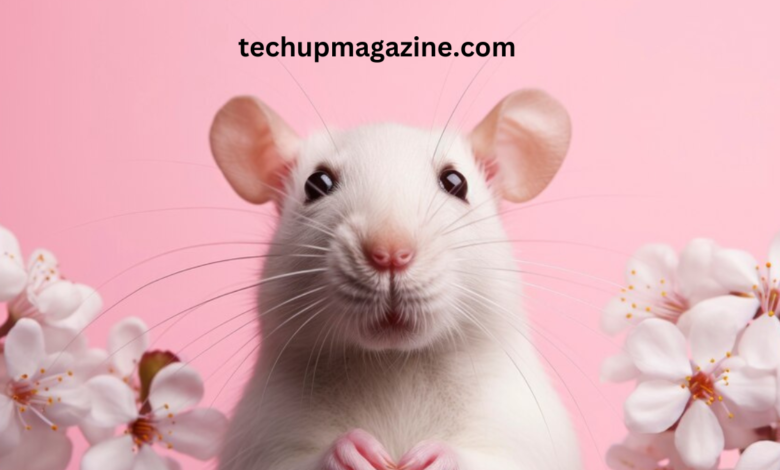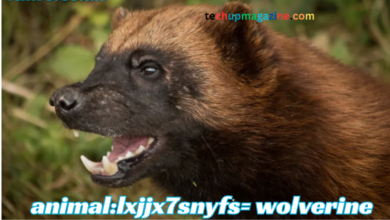animal:yzozt5bfcfa= mouse: Fascinating Facts About These Tiny Creatures

Introduction animal:yzozt5bfcfa= mouse: A Look into the Life of a Small but Significant Animal
Paragraph 1
animal:yzozt5bfcfa= mouse are one of the most widespread and diverse small mammals, found in nearly every corner of the world. Despite their tiny size, these creatures have an incredible impact on ecosystems, scientific research, and even human history. The term “mouse” generally refers to small rodents in the family Muridae, and they are known for their adaptability, intelligence, and survival skills. But there’s much more to these little animals than what meets the eye animal:yzozt5bfcfa= mouse.
Paragraph 2
As animals, mice possess unique characteristics and behaviors that set them apart. Known for their large ears, small size, and twitchy noses, mice can often be found scurrying around fields, urban areas, and homes. They play an essential role in the food chain and are a major focus in biological research. In this article, we’ll take an in-depth look at what makes these small creatures so remarkable, diving into their biology, habitat, diet, and much more animal:yzozt5bfcfa= mouse.
Biological Characteristics of animal:yzozt5bfcfa= mouse: Understanding the Anatomy and Physiology of Mice
Paragraph 1

animal:yzozt5bfcfa= mouse have several distinct physical features that make them instantly recognizable. With their small, compact bodies and round ears, they are built for agility and survival. A mouse’s fur can vary in color, usually ranging from gray to brown, allowing them to blend in with various environments and evade predators. Their tiny, yet powerful limbs enable them to run at surprising speeds, which aids them in foraging and escaping threats animal:yzozt5bfcfa= mouse.
Paragraph 2
The anatomy of a mouse is uniquely suited to its lifestyle. Mice have sharp teeth that grow continuously, allowing them to gnaw on hard objects and access food sources that might otherwise be inaccessible. Additionally, they possess highly developed whiskers that help them navigate through tight spaces. The respiratory and digestive systems of mice are also well adapted to allow them to survive in a variety of environments, from bustling cities to quiet countryside animal:yzozt5bfcfa= mouse.
Habitat and Distribution: Where Mice Thrive and Why
Paragraph 1
Mice are remarkably versatile animals that can adapt to a wide range of habitats. They are found on every continent except Antarctica, inhabiting grasslands, forests, agricultural areas, and urban settings. Their adaptability is largely due to their diet and ability to live near humans, where they find ample food sources and shelter. Some species, such as the common house mouse, have even developed a preference for indoor environments, where they thrive alongside people animal:yzozt5bfcfa= mouse.
Paragraph 2
Natural habitats for mice include meadows, woodlands, and marshes, but as opportunistic creatures, they are quick to settle in areas with abundant food and minimal threats. Due to their small size and high reproductive rate, mice can establish large populations in new environments very quickly. Their distribution and abundance make them a crucial prey species for many animals, such as birds of prey, snakes, and small carnivorous mammals animal:yzozt5bfcfa= mouse.
The Diet of Mice: What Do Mice Eat in the Wild and in Human Settings?
Paragraph 1
Mice are omnivorous, meaning they can eat both plant and animal matter. In the wild, their diet primarily consists of seeds, grains, fruits, and insects. They are opportunistic feeders, so they will consume whatever food is available in their environment. This adaptability allows them to survive in varied ecosystems, from natural landscapes to urban areas, where human food scraps are plentiful animal:yzozt5bfcfa= mouse.
Paragraph 2
In human environments, mice are known to nibble on almost anything, including packaged food, pet food, and garbage. This dietary flexibility is one of the reasons they are so successful in urban environments. Their feeding habits can be problematic for humans, as they often lead to property damage and contamination. Understanding what mice eat can provide insights into controlling their populations and reducing their impact on human living spaces.
Behavior and Social Structure: How Mice Interact with Each Other and Their Environment
Paragraph 1
Mice are social animals with complex behavior patterns. They communicate through vocalizations, scent markings, and body language. Social structure in mice varies depending on the species, but many live in small groups that help them with foraging and protecting each other from predators. Mice are also known for their keen sense of smell, which helps them identify food sources, detect danger, and recognize family members animal:yzozt5bfcfa= mouse.
Paragraph 2
Territoriality is a significant aspect of mouse behavior. In the wild, male mice establish territories and may become aggressive toward intruders, especially when competing for mates. Female mice are typically more cooperative and often form nests together, where they care for their young. This social organization enables them to raise their offspring in a relatively safe environment, increasing the young mice’s chances of survival animal:yzozt5bfcfa= mouse.
The Role of Mice in Ecosystems: How Mice Contribute to Biodiversity and Food Chains
Paragraph 1
Mice play an essential role in ecosystems as both prey and consumers. As a major food source for predators, they help sustain populations of birds, reptiles, and mammals that rely on small mammals as a primary part of their diet. Additionally, mice contribute to the health of their habitats by helping with seed dispersal. By carrying seeds in their fur or through their feces, they assist in plant growth and the spread of vegetation across landscapes animal:yzozt5bfcfa= mouse.
Paragraph 2
Their foraging behavior also impacts soil composition, as they help break down organic matter and aerate the ground. This not only promotes healthier soil but also aids in nutrient cycling. Mice are small yet significant contributors to biodiversity, providing a foundation for various ecological processes that benefit plants, animals, and humans alike animal:yzozt5bfcfa= mouse.
Mice in Scientific Research: Why Mice Are Essential to Laboratory Studies
Paragraph 1
Mice are one of the most commonly used animals in scientific research, particularly in genetics, psychology, and medical studies. Their genetic similarity to humans makes them valuable for studying diseases, testing medications, and understanding biological processes. In laboratories, scientists often use specific breeds of mice, such as the laboratory mouse, which has been genetically modified to study certain traits or diseases animal:yzozt5bfcfa= mouse.
Paragraph 2
The use of mice in research has led to groundbreaking discoveries in various fields, from cancer research to neuroscience. Their short lifespan and high reproduction rate make them ideal for long-term studies, enabling scientists to observe multiple generations in a relatively short period. While there are ethical considerations involved in animal testing, the scientific contributions made possible by research with mice are undeniable animal:yzozt5bfcfa= mouse.
Common Myths About Mice: Debunking Misconceptions and Understanding Reality
Paragraph 1
Mice are often misunderstood animals, and there are many myths surrounding them. One common misconception is that all mice carry diseases, which is not entirely true. While some species can transmit diseases, not all mice are harmful. In fact, wild mice play a natural role in their ecosystems and are generally not a threat to humans when left undisturbed animal:yzozt5bfcfa= mouse.
Paragraph 2
Another myth is that mice are dirty animals. While they do live in close quarters and are attracted to human trash, mice are actually fastidious groomers. They spend a significant portion of their time cleaning themselves and their surroundings. By debunking these myths, we can better appreciate the unique qualities of these animals and the roles they play in nature animal:yzozt5bfcfa= mouse.
Human-Mouse Interaction: The Challenges and Benefits of Coexistence
Paragraph 1
Humans have a complicated relationship with mice, often viewing them as pests yet recognizing their scientific importance. In urban settings, mice are notorious for invading homes, contaminating food, and damaging property. This has led to various pest control efforts, from traps to repellents, aimed at keeping mice out of human spaces. However, controlling mice populations can be challenging due to their rapid reproduction and adaptability.
Paragraph 2
Despite these challenges, mice have also brought significant benefits to human society, especially in the field of science. They have contributed to medical advancements, helped in understanding genetics, and served as models for studying human diseases. Recognizing both the challenges and benefits of our coexistence with mice can lead to more effective and humane ways of managing their presence in human environments.
Conclusion: Embracing the Importance of Mice in the Natural World
Paragraph 1
Mice may be small, but their impact on the natural world and human society is substantial. From their roles in ecosystems to their contributions to scientific research, they are integral parts of the world around us. While they may be viewed as pests by some, mice play critical roles in maintaining ecological balance and advancing scientific understanding.
Paragraph 2
Understanding the complexities of mice, from their biology to their behavior, allows us to appreciate their place in nature and our shared environment. Whether we encounter them in the wild, in laboratories, or unfortunately in our homes, mice remind us of the resilience and adaptability of life on Earth.
This outline organizes the article into a comprehensive exploration of mice, covering all aspects of their lives, contributions, and interactions with humans. Let me know if you’d like me to proceed with the full article or make any adjustments to this outline.
You may also read
it is not wisdom but authority that makes a law. t – tymoff
kelly bates asks supporters not to take out their anger on nbc 10

